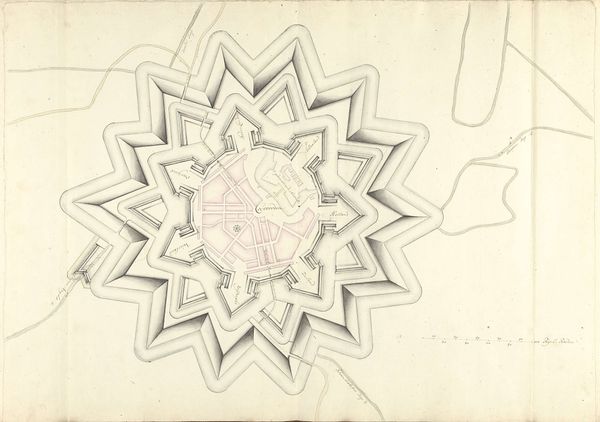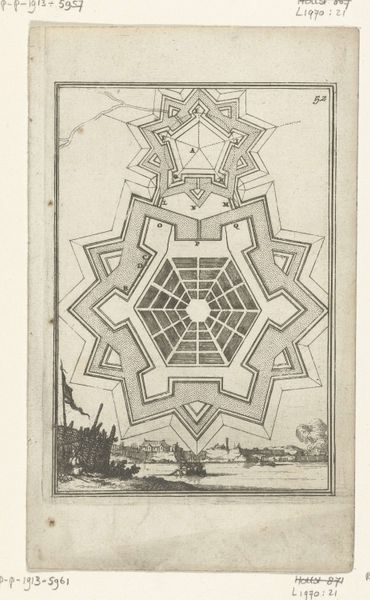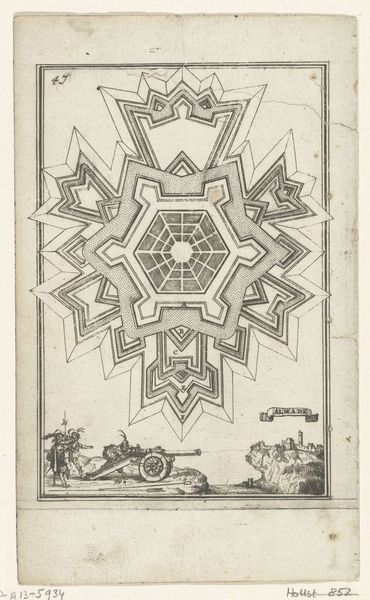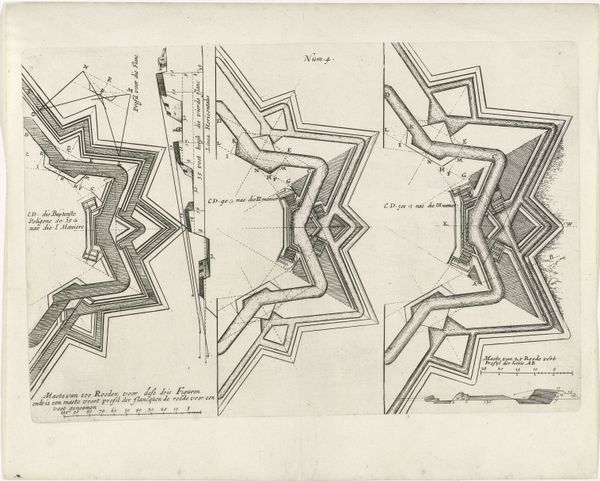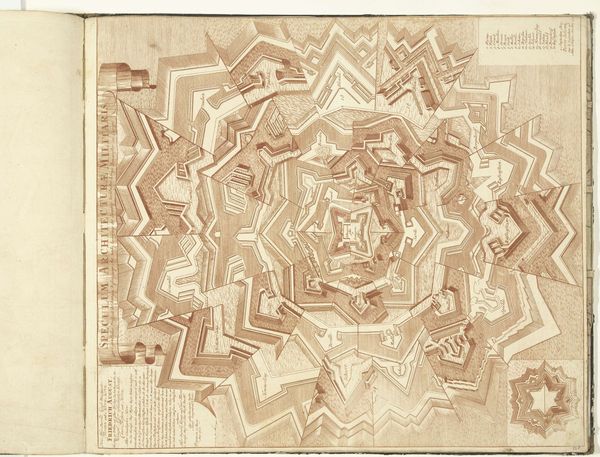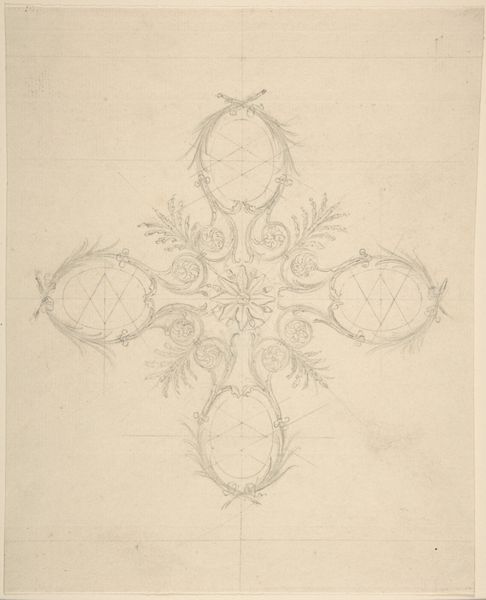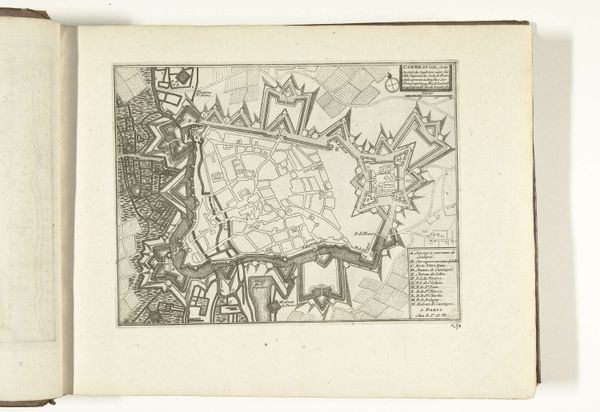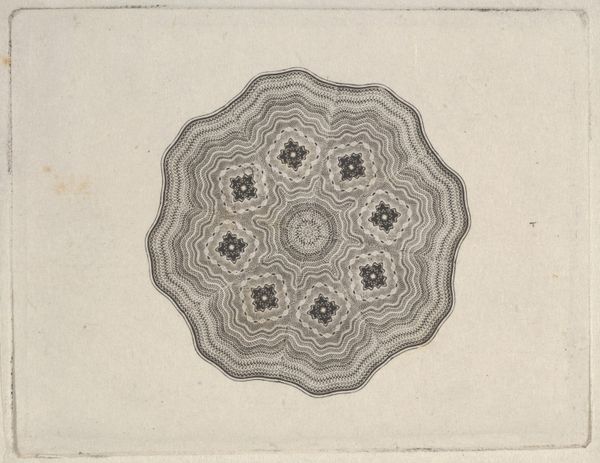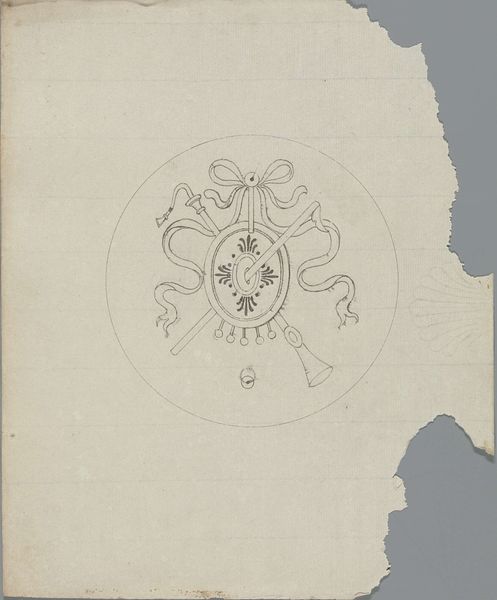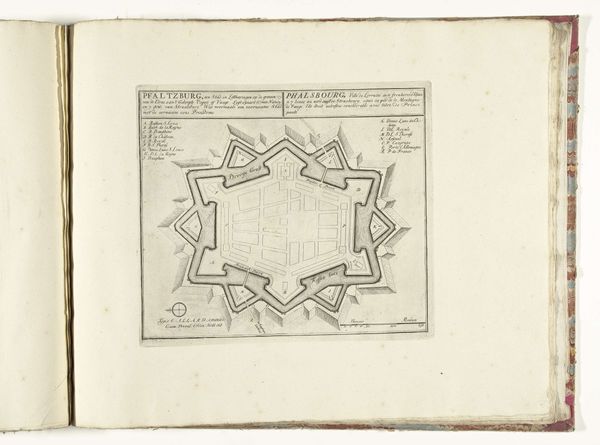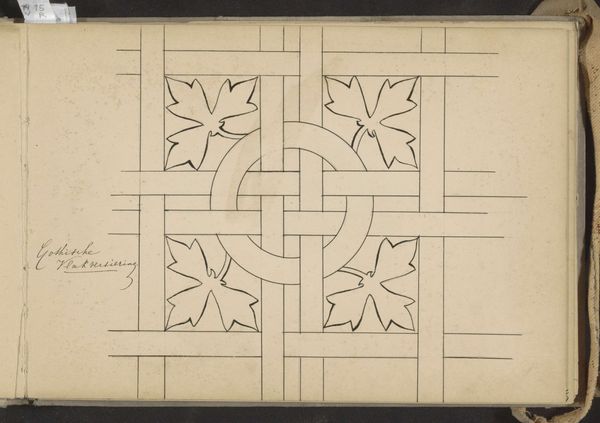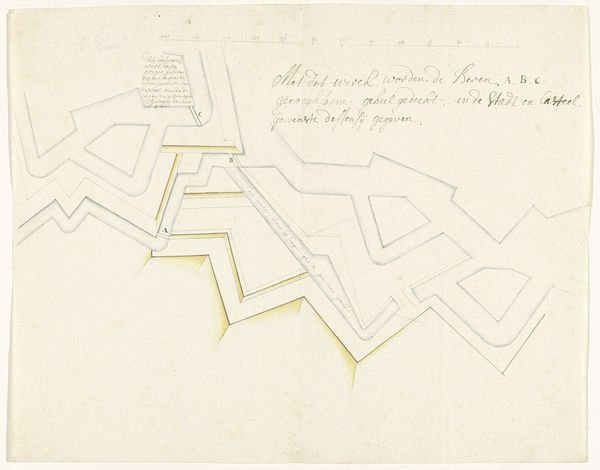
Plattegrond van Coevorden, veroverd door de bisschop van Munster in 1672 1672
0:00
0:00
gasparbouttats
Rijksmuseum
print, engraving
#
baroque
# print
#
cityscape
#
engraving
Dimensions: height 185 mm, width 260 mm
Copyright: Rijks Museum: Open Domain
This print of Coevorden, made by Gaspar Bouttats around 1672, gives us a bird’s-eye view of the town during a time of conflict. It’s an etching, meaning that the artist would have coated a copper plate with wax, scratched the image into the wax with a sharp needle, and then bathed the plate in acid. The acid bites into the exposed metal, leaving behind fine lines. The plate is then inked and printed onto paper. Look closely, and you’ll see the extraordinary detail that can be achieved with this process. Bouttats shows the complex fortifications around Coevorden. The angular projections, like the points of a star, were designed to give defenders a clear line of fire. Prints like this weren’t just artworks, they were also vital tools for military strategists. They speak to a time when meticulous craftsmanship was essential to both art and war. The labor-intensive printmaking process, combined with the skill required to create accurate depictions, elevates this map beyond mere documentation, inviting us to appreciate the intersection of art, craft, and historical context.
Comments
No comments
Be the first to comment and join the conversation on the ultimate creative platform.
